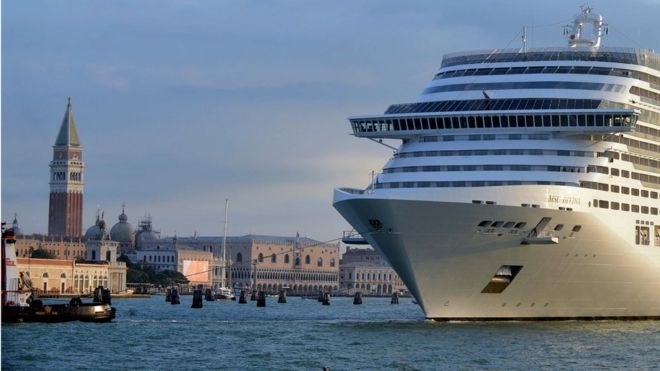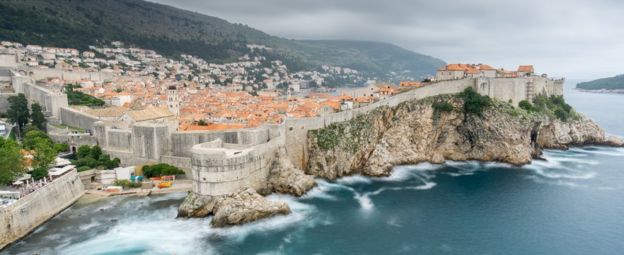Tourists boat cruise overwhelms Europe 's ancient resorts
Ancient cities around the shores of the Adriatic and Mediterranean are on the front line.streets squeezed full of summer visitors as budget airlines and giant cruise ships unload ever-growing armies of tourists.
The Croatian city of Dubrovnik: a perfectly preserved historical miniature, carved from honey-coloured stone set in a sea of postcard blue.
The walls of its Old City, custodians of cultural treasures left by everyone from the Romans and the Ostrogoth s to the Venetians and the Habsburgs where about 1500 people live.
On a busy day three modern cruise ships, each one the size of a floating apartment building, can disgorge five or six times that number of people into the city.
They join the throngs of tourists staying in local hotels and in rooms rented over the internet, in streets where almost every elegant stone house has been converted into a B&B.
Mark Thomas, who edits The Dubrovnik Times, explains the phenomenon like this. "When I first got here, I'd stand back if I saw that people were taking photographs of each other. Now there are so many people that I know if I did that, I'd never get anywhere here."
Reasons for increased numbers of tourist
Tourism remains essentially a good thing and in the developed world we nearly all do it.
It means trade and cultural exchange and it's both a symbol of rising prosperity and a generator of future wealth.
Part of the "problem" is that travelers from traditional sources like the UK, Germany and the USA are increasingly being joined by the new middle classes of countries like Russia, China and India.
The issue of security, which means that many tourists feel safer in Europe than they do in alternative destinations like Tunisia, Turkey or Egypt, and it's hard to see the numbers falling any time soon.
The Croatian city of Dubrovnik: a perfectly preserved historical miniature, carved from honey-coloured stone set in a sea of postcard blue.
The walls of its Old City, custodians of cultural treasures left by everyone from the Romans and the Ostrogoth s to the Venetians and the Habsburgs where about 1500 people live.
On a busy day three modern cruise ships, each one the size of a floating apartment building, can disgorge five or six times that number of people into the city.
They join the throngs of tourists staying in local hotels and in rooms rented over the internet, in streets where almost every elegant stone house has been converted into a B&B.
 |
| PHOTO CREDIT: GETTY IMAGE |
- Keeping busy on the world's biggest cruise ship
- Italian tourist treasure turned into ghost town by earthquake
- Will Venice be loved to death?
- Bulgarian resort 'best value in Europe'
Mark Thomas, who edits The Dubrovnik Times, explains the phenomenon like this. "When I first got here, I'd stand back if I saw that people were taking photographs of each other. Now there are so many people that I know if I did that, I'd never get anywhere here."
 |
| PHOTO CREDITS: GETTY IMAGES |
Reasons for increased numbers of tourist
Tourism remains essentially a good thing and in the developed world we nearly all do it.
It means trade and cultural exchange and it's both a symbol of rising prosperity and a generator of future wealth.
Part of the "problem" is that travelers from traditional sources like the UK, Germany and the USA are increasingly being joined by the new middle classes of countries like Russia, China and India.
The issue of security, which means that many tourists feel safer in Europe than they do in alternative destinations like Tunisia, Turkey or Egypt, and it's hard to see the numbers falling any time soon.



Comments
Post a Comment